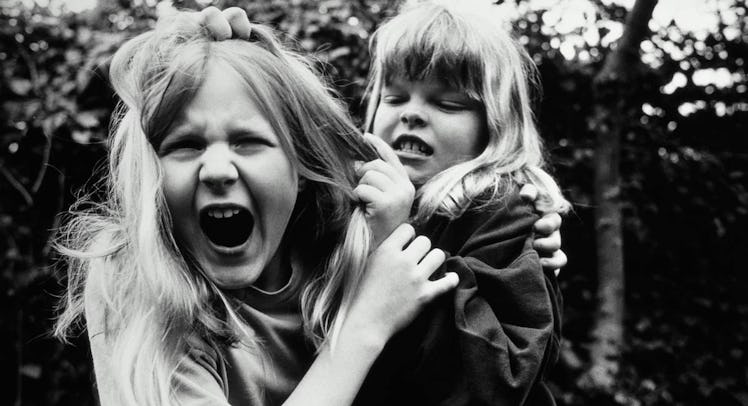How to Help a Violent Kid
When it comes to anger, encouraging a kid to talk will probably never stop the hitting

The imperative that parents should encourage children to use their words instead of lash out physically or scream incoherently is both well-intentioned and logical. But research shows that it’s also very crummy advice. In fact, imploring a child to use their words could simply result in a very verbal and very violent kid. It’s time to rethink the strategy and try something else.
“It’s based on an assumption that really violates much of what we know,” says Dr. Alan Kazdin of the Yale Parenting Center. “The view is that if we can get people to express anger one way they wouldn’t express it another way. It turns out it doesn’t work that way at all…. You have to lower the overall rate of aggression. And you have to make sure that aggression isn’t being fed by other things.”
READ MORE: The Fatherly Guide to Anger Management
The “use your words” meme began way back with Freud. He developed the idea of psychological catharsis as a riff on Aristotle, who first coined the term to define a bodily purge. Freud’s idea was that a patient suffering some form of psychological “hysteria” could re-live the trauma through the safety of psychoanalysis and rid themselves of their psychological issues. This idea was later adapted towards a substitutive method for anger management. The thought was that when a person took their anger out through other outlets—violent video games, punching bags, participation in violent sports—it would diminish the need to be physically violent in antisocial ways.
Nope. Wrong again. The only way to truly treat anger is to address that anger directly.
One of the strategies taught by Kazdin is problem-solving solving skills training. The basic technique includes talking with a kid about a situation where violence is precipitated, coming up with an agreement about something else to do instead of getting violent and then role playing that situation. The emphasis in the technique is with the role playing. Because it’s the role playing that actually changes the child’s brain, not the talking that precedes it.
Kazdin notes that there’s ample evidence that this role playing works. In fact, he explains it’s analogous to a pilot training how to react to trouble in a simulator. “Thank god simulation works,” he says. “When they get into a real crash situation of course it carries over.”
But more than simulation, parents concerned about a child’s violence should take a close look at the kind of violent media they might be consuming, which will likely not help matters. More than that they should modeling their own appropriate anger management. Kazdin adds that spanking is not an appropriate way for parents to model non-violence if violence happens to be something they’re worried about in their kid.
Does this mean that parents should not encourage their kid to talk? No. “The message not to be lost is that it’s really good to get children to talk about things and solve problems,” Kazdin says. “That can really help in life. But it’s not a method of getting rid of violence.”
This article was originally published on